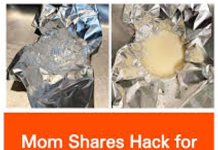Have you found a small pest in your home that is “bothering” you with its infestation? Here’s how to identify and get rid of the pest.
Like all living things, insects have their rightful place on this planet. Bugs and insects will invade our homes whether we like it or not. Here are some of the types of insects that lurk indoors, and how to get rid of them where they cause the most damage.
- Bed bugs.

What draws bedbugs into our homes? They usually live and breed outdoors, but often move indoors to hibernate when temperatures are cooler. If you see these shield-shaped bugs in your home, don’t swat or crush them. When disturbed, bed bugs emit a foul odor that attracts more bed bugs, which is why the name is so common. When it comes to getting rid of bedbugs, there is no secret formula. The only downside is that after use, the vacuum cleaner bag must be removed and disposed of away from the house.
- Weevils.

Weevils usually enter the house through food. The adults burrow into rice or grains to lay eggs, so you may not realize you’ve brought the pests into your home until they hatch out and crawl around your pantry. What is the quickest way to deal with this brown and black bug infestation? Clean up. Throw out all unsealed dry goods such as flour, cornmeal, oats, rice, pasta and pre-packaged items. And throw away boxes of sealed products, such as soup mixes and gelatin. Even if weevils don’t eat these items, they can hide in the box and come out later to contaminate the food. Once you’ve discarded the damaged food, clean the grocery store shelves and spray the area with a household insecticide. Let the liquid dry before restocking.
- Beetles.

Adult carpet beetles do not cause damage to houses. However, this is not the case with larvae. Carpet beetle larvae can burrow into carpets, curtains, upholstery, clothing and books. You may not realize you have an infestation until you notice the damage. If you suspect it’s a problem, roll up your arms and clean it out. Vacuum thoroughly to remove dust, cobwebs and other pest breeding grounds. Then, remove clothing from closets and storage bins and wash or clean everything. Finally, treat the carpet with insecticide, boric acid or diatomaceous earth to kill any remaining larvae.
- Centipedes.

Centipedes are actually one of the good guys. They don’t damage houses or contaminate warehouses, and they feed on bad insects like termites, moths and cockroaches. However, if you can’t stand living with these multilegged neighbors, set traps or spray insecticides around skirting boards, doors and windows. In addition, remove shrubs and debris from around your house and seal cracks and gaps in the exterior walls of your home to prevent future infestations. Centipedes prefer a humid environment, so it is recommended to purchase a dehumidifier.
- Fruit flies.

Surprisingly, fruit fly infestations can quickly get out of control. You may notice one fly buzzing around your fruit in the morning, and when you get home from work you may see six more flies. It’s not just my imagination; these flies are growing and growing!” . Fruit fly larvae hatch within 24 hours of laying their eggs, so you need to act quickly to get rid of them. Store soft fruits in the refrigerator to cut off their food supply. Also, wipe down cutting boards and counters immediately after cooking, and empty waste and recycling bins daily. If you find these common house bugs despite these precautions, make a simple DIY fly trap by filling a small jug with half a bottle of apple cider vinegar. Next, add a tablespoon of dishwashing detergent and fill the rest of the cup with warm water. The flies will fly into the non-trap, but not out.
- Ants.

Ants are small, relentless creatures that invade homes. They invade in search of food, water and shelter, making kitchens and bathrooms prime targets. Bait traps are very effective at controlling ants, but they are not safe to use in areas accessible to small children and pets. If you don’t like the idea of using traditional poisons, why not try a natural remedy? Once the pests have been removed, stop them from repopulating by vacuuming regularly, wiping down surfaces daily to remove odors and taking out the trash daily.
- Cockroaches

Cockroaches are a problem across the country, but they are especially bad in big cities. If you see them in your kitchen or bathroom, you can assume there are plenty out of sight. Once cockroaches are out, they are hard to get rid of, so act firmly, quickly and consistently. Place insecticides or cockroach traps under sinks, behind toilets, next to refrigerators and other places where cockroaches might hide. Change traps and reapply insecticide regularly to control any cockroaches that have hatched. In addition, take precautions to make your house less attractive. Eliminate cockroach bait by cleaning up immediately after eating, sealing and storing food, and throwing away trash daily. It is also necessary to be especially thorough in removing any dog food left on the pet dish after the dog or cat has eaten.
- Drain flies.

Drain flies live in places where you would never expect to find winged creatures. They are found in sinks and shower drains because they feed on the decaying debris in the drain and lay their eggs. If you find buzzing flies defecating around your sink, here’s how to remedy the situation. First, determine which drain they are jumping out of. You may have a clog in that drain. You need to clear it before you lose the bugs. Use a drain snake or plumbing brush to scrape out any accumulated slime, and open the p-rap under the sink to remove any debris from the clog. (If you must, use a chemical drain cleaner). Shut off the system again and finally pour the enzyme cleaner down the drain to remove any remaining residue and any remaining sewer fly eggs.
- Silverfish.

The shiny silverfish is the kind of insect you never want to see indoors. This pest feeds on fabric, paper, glue and cardboard boxes. Silverfish survive longer than dinosaurs, so once they are out in the open, it’s hard to kill them. However, traps, insecticides and natural substances such as boric acid and diatomaceous earth can be used to get rid of them. To make sure your home is silverfish free, make small changes to make it less silverfish friendly. Remove piles of newspapers, junk mail and old cardboard boxes. Store off-season clothes and supplies in plastic storage bins, and keep dry goods out of boxes and in containers with sealed lids.
- mites.

Unpleasant ticks, but they can be found in every home. Mites feed on dead skin cells and can colonize any plush surface to which mites like to attach, such as carpets, upholstery, bedding and children’s toys. Although mites cannot be completely eliminated, daily cleaning can help reduce their numbers. Bedding should be washed once a week in warm water, and carpets and furniture should be vacuumed regularly. To get rid of mites from stuffed animals and delicate items you don’t want to wash, the freezer is a good place to start. Put them in a Ziploc bag and chill them in the freezer for at least 48 hours, which will kill the mites.









